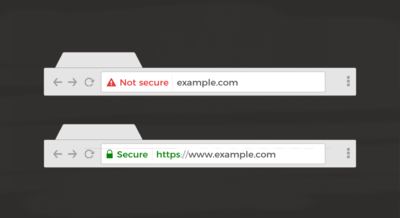
Maarten Delmoitie
The changes relating to safety on websites follow each other in rapid succession. Following the new GDPR legislation, Google Chrome also announced a new security application. All browsers have supported SSL certificates for some time now, but 'Not Secure' notifications will soon be visually displayed on unsecured web pages in Google Chrome. Calibrate will explain for you where these notifications will be shown specifically and how to prevent this.

When you enter personal details (ranging from an e-mail address to your bank account number) on a website, you naturally expect these details to be secure. Google also expects this. For some time now, it has been pushing website owners to make their sites safer and convert them to 'https' sites. That's why it started its two-part plan to label unsecured pages at the beginning of 2017. Since January of this year, you will see an exclamation mark in your browser when you have to enter credit card details or passwords on 'http' websites. However, Google felt that this was insufficient and therefore introduced a new measure. Since October, this message has now been visually enhanced with the text 'Not Secure'.
Here are two easy questions to determine precisely that:
If the answer to this question is positive twice, visitors will see 'Not Secure'. By the way, the message will also be visible when you surf on unsafe websites in Incognito mode.
Are you then no longer able to surf the internet safely? Certainly you can. Https websites guarantee your safety. With the SSL certificate (Secure Socket Layer) your browser ensures that your personal information does not end up with hackers or can be intercepted by rogue persons.

With this new measure, Google hopes that visitors will no longer enter private data on 'http' websites, without thinking about the possible consequences. The longer you keep your unsafe website, the more visitors will drop out. You will lose their trust and credibility.
How do you prevent visitors from seeing 'Not Secure' when they visit your website? You have to make sure that all forms that ask for a password or credit card details are on an https website. This means that the top-level page must be https. If the input is in an iframe, then the iframe must also go via https.
Have you no idea how to tackle this in concrete terms? Don't worry, we at Calibrate will be happy to help you. We make sure that your website becomes and stays safe - 'https' in other words. You also don't have to worry about your website attracting fewer visitors or no longer being SEO-proof. We take all these things into account. So don't hesitate any longer and contact us!